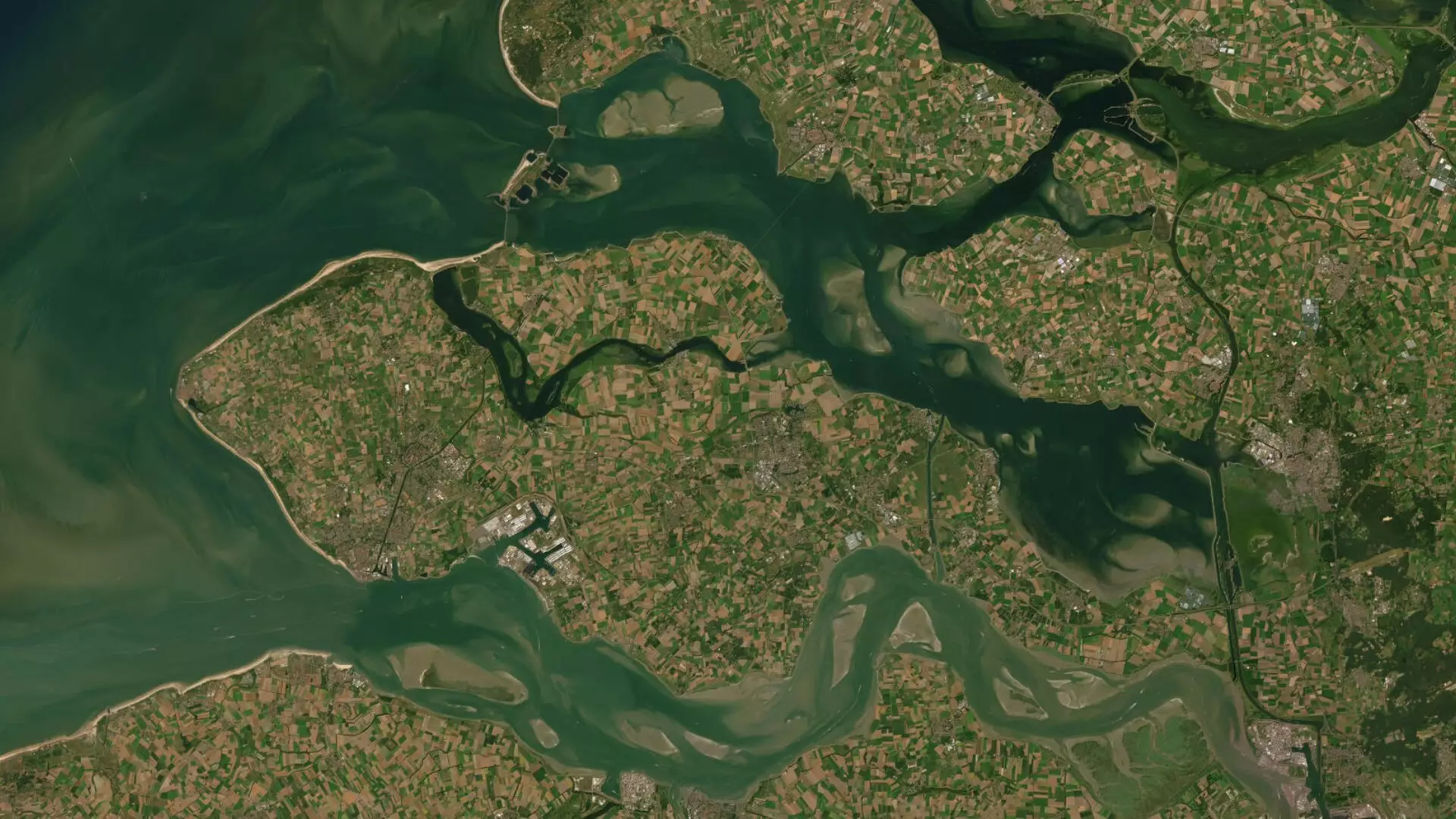The recent study conducted by a Dutch-Chinese research team has shed light on the critical role of turbidity in preserving intertidal areas and salt marshes along coastlines worldwide. The researcher, Tim Grandjean, emphasizes the importance of turbid water in promoting the growth of tidal flats, which are essential for both biodiversity and coastal defense.
By analyzing decades of satellite data on tidal areas and water turbidity, Grandjean has established a direct correlation between turbidity levels and the growth of intertidal zones. The presence of sand and silt particles in turbid water contributes to the expansion of coastal areas, making them less vulnerable to erosion and sea level rise. However, the study highlights a troubling trend of decreasing turbidity in coastal waters globally, putting these vital ecosystems at risk.
Human activities, such as the construction of dams and storm surge barriers, have significantly disrupted natural sediment flows in water systems, leading to sediment starvation in tidal flats. For example, the Three Gorges Dam on the Yangtze River has drastically reduced sediment supply downstream, hindering the natural rebuilding of intertidal zones crucial for coastal protection and biodiversity.
Similarly, the storm surge barrier in the Oosterschelde in the Netherlands has resulted in “sand starvation,” preventing the replenishment of intertidal areas and causing them to erode over time. Grandjean warns that such interventions may have long-term consequences for coastal safety and biodiversity, necessitating a careful balance between nature conservation and coastal protection.
In his Ph.D. research, Tim Grandjean has also collected data on the dynamics of intertidal areas using innovative sensors developed at NIOZ. These precise measurements have revealed the significant variability of intertidal zones within a single day, emphasizing the vulnerability of these ecosystems to changes in water levels and sediment dynamics.
Furthermore, Grandjean’s research on the impact of groins in improving the quality of tidal nature along the Westerschelde demonstrates the potential benefits of such coastal management measures. By reducing flow between groins, benthic life along coastal areas can thrive, providing stability to intertidal zones and mitigating the effects of rising sea levels. However, further research is needed to fully understand the long-term effects of these interventions.
The study by Tim Grandjean underscores the critical importance of turbidity in preserving tidal flats and intertidal areas for the future. As human activities continue to impact coastal ecosystems, it is essential to rethink current interventions and prioritize the conservation of these valuable habitats. By recognizing the significance of turbidity in coastal dynamics, we can take proactive measures to protect these essential ecosystems and ensure the sustainability of our coastlines for generations to come.


Leave a Reply